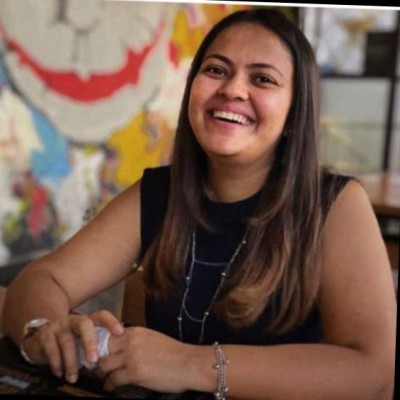Neha Suyal is a computer science engineer who co-founded Woovly, a social commerce website that focuses on lifestyle goods. She has extensive experience creating open-source technology and quit her job at HP India in 2015 to enrol in the Stanford Ignite program on Entrepreneurship and Leadership. Her mother’s unwavering will to overcome hardships and achieve her goals serves as an example to her. Woovly has grown by 30% per month due to word-of-mouth marketing.
A social commerce website that focuses on lifestyle goods is called Woovly. Word-of-mouth marketing is causing the firm to grow by 30% per month. Here’s how.
What is your background and what are you concentrating on right now?
I, Neha Suyal, am changing how people in India’s small towns and cities find clothing, cosmetics, and lifestyle items.
My first venture into business is Woovly, which is based in Bangalore, India. It is the leading social commerce platform for fashion, beauty, personal care, and lifestyle items in India. Brand-tagged user-generated content driven by artificial intelligence is used to facilitate customer purchases.
As a licensed computer science engineer, I have vast expertise creating open-source technology. I quit my well-paying job at HP India in 2015 to enrol in the Stanford Ignite program on Entrepreneurship and Leadership, where I met J. Venkat, my co-founder.
After finishing the program, I assisted Venkat’s former firm, Quess Corp., in understanding the industry and improving its KPIs.
I chose in 2017 to start my own business after working on several Telecom and managed services initiatives at Quess for two years. In 2019, I co-founded Woovly, a platform for adventure activities, with Venkat. Woovly moved their emphasis to social commerce for leisure goods during the pandemic of 2020.
What is your background, and how did you come up with this idea?
My career and experience were developed at HP while working on open-source technologies after I received a degree in computer science engineering from a regional engineering college in Uttarakhand. I never had to look for a mentor. 35 years ago, my mother created and is still running the sole school in my neighborhood. My mother’s unwavering will to overcome hardships and achieve her goals serves as an example to me.
The seed for Woovly was sown at Stanford in 2015, when I met my co-founder. We discovered that we had similar interests in studying and forecasting consumer behavior, as well as a shared conviction that customers increasingly prefer to find items and brands online rather than offline.
I spent two years working for Quess Corp. in India after completing the brief program. I visited widely throughout Tier II and Tier III cities in India as part of my duties and found that the young people there wished to live the lifestyle of their peers in Urban India or Tier I cities. I saw a gap in the market for a platform that would help them achieve their objectives. This understanding and our conviction in online brand discovery later, when we made the decision to pursue entrepreneurship, led us to social commerce and Woovly.
How were Woovly’s foundations laid?
I observed the local kids were diligent, aspirational, and interested in purchasing lifestyle goods on my business trips to Tier II and Tier III cities. I became aware of the purchasing habits of this market niche as a result, which finally inspired me to create Woovly.
I left Quess in 2017, and Venkat joined me in 2019. Woovly was originally designed as a platform for outdoor activities, but during the pandemic, we changed our focus to social commerce for apparel, cosmetics, and lifestyle items.
Our biggest problem started in the first half of 2020. We had just started to acquire substantial traction and had more than a million users when the epidemic hit. But the journey came to an end, and we had to improvise to adjust. We chose to provide a unified experience on our app, this time for fashion, cosmetics, and lifestyle items, due to our experience in developing the optimal blend of information, community, and commerce.
What marketing techniques did you use to grow your company?
We were sure that we would not utilize social media adverts for marketing when we first started our business. Because we wanted organic growth, we created our own growth hack.
We met with the first a thousand users directly, explained the value proposition to them, and established direct communication. We wanted them to become brand advocates or brand aficionados who could spread the word about our company in their local areas. They then sought out and hired college students who wanted to work as influencers and content producers.
As we expanded, we collaborated with management college placement offices and hired students who wanted to work as content developers. We developed connections with 10,000 students and 1,000 universities over time. We were able to establish a brand for ourselves among young people without having to spend money on pricey advertising efforts because to this powerful network effect. They became into micro and nano influencers with their own fan bases, whilst we had our own group of supporters. It was the most productive and profitable marketing plan we had ever used.
To far, 72% of our customers have come to us organically or through word of mouth. 61% of our revenue comes from these micro- and nano-influencers.
What are your long-term goals?
We want to add four new lifestyle product categories and treble the amount of direct-to-consumer firms listed on our platform in the near future. We strive to interact with our users in their vernacular or local languages because India is a multilingual country.
Our research indicates that the target market has a monthly income of about Rs 25,000. Each content producer using the Woovly platform should be able to make an extra Rs 12,000 per month by the end of the year, according to our projections. This would help them reach their aim of leading a better lifestyle and represents around 50% of their normal monthly salary. We want to take 15% of the $100 billion social commerce industry over the next five years.
Through the Woovly Creator Academy, we hope to teach more young women in Tier II and Tier III cities to produce and shoot video content. They have the chance to make a living or supplement their income using incentives on our platform when they generate content and grow their audience as micro and nano influencers.
What were the biggest challenges you faced, and how did you get beyond them?
When Covid hit, despite the fact that our business was prospering and growing, we were forced to make a choice concerning the future. Despite the fact that it was an unforeseen challenge, we handled it well. In order to be relevant and maintain our growth, our plan required that we uphold our core values and fundamental business assumptions. This choice led to a 600% rise in our user base during the ensuing 18 months.
Implicit prejudice presented a second challenge for me as a female business owner. There are skeptics everywhere, including in families, friendship circles, and professional settings. Nobody supported my choice to quit my job and start my own company, especially considering that I’m from a Tier III city (small village) in India. It was judged too risky because I was supposed to follow the traditional route and keep a regular day job.
However, I’m happy to inform that young women find my business journey inspiring as Woovly swiftly grows and sets new standards.
What are your biggest flaws, exactly? What were your biggest mistakes?
As we built up, we needed a lot more qualified resources, which is where I think I went wrong. I took a lot of time to find fresh personnel despite the urge to hire immediately. I gave new hires numerous opportunities to perform better before firing them when they failed to live up to expectations. Our progress was impeded in some ways by the sluggish students and poor performance. I soon saw, though, that this wasn’t the ideal strategy to create. I’ve learned to control my emotions and, when required, make tough choices.
The fact that we were in unfamiliar area further hindered us. We lacked comparison points or criteria because social commerce is still a relatively new idea in India. Since no one was available to impart industry knowledge, we had to wing it and build as we went.
What actions would you do differently if you had the chance?
Woovly’s construction has been exciting and enjoyable. My adventure has been a fantastic opportunity to learn. I have seen challenges, setbacks, and barriers as chances for learning and as ways to expand my knowledge. There is nothing I would alter as a result.
What educational tools would you suggest for entrepreneurs who are just starting out?
I’m a voracious reader who particularly likes books on a variety of business, entrepreneurship, and consumer behavior-related subjects. I read Predictably Irrational by Dan Ariely to understand why people make the purchases they do.
For further information
Additional details are available on our website and my LinkedIn page.
We gather unique business case studies from all over the internet, to inspire you with a wide range of business ideas. This case study was supervised by our team and it definitely caught our interest. You can find other inspiring business stories here.







